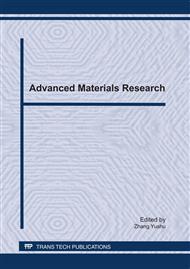p.432
p.437
p.441
p.445
p.450
p.454
p.460
p.465
p.470
Manufacturing Process Planning to Evaluation on Failure Causes for Lithography Machine: Analytic Hierarchy Process
Abstract:
This study conducted hierarchical analysis on the evaluation item of the stability index of the lithography machine, and established a set of evaluation mechanism for failure prediction, in order to provide references and indicators of troubleshooting for lithography machine. The results showed, when the lithography machine is out of order, the possible failure causes are mainly be found based on the past experiences. Moreover, engineers’ skills in maintenance of lithography machine should be also considered. It is clear that, technology-centered is the current trend in today's semiconductor technology processing. In the weight analysis of rating index for complexity in broken Wafer, the most important problem is the lithography machine error due to failure in its components. Good design and configuration of semiconductor lithography process in the early stage can enhance the rapid maintenance of lithography machine in case of malfunctioning effectively. For timely maintenance, maintaining the organization stringency needs to be improved. This study also found that, under the good configuration of maintenance system, adequate information is closely associated a good system. As for lithography process in semiconductor industry, the complexity of broken Wafer is first considered. Thus, the overall lithography process of semiconductor relies on engineers’ experience. More specifically, a quick error interpretation and repair are required in field maintenance. As in a competitive market of semiconductor processing with high-tech and high-cost, a timely maintenance in the lithography machine is urgent and requested.
Info:
Periodical:
Pages:
450-453
Citation:
Online since:
February 2011
Authors:
Price:
Сopyright:
© 2011 Trans Tech Publications Ltd. All Rights Reserved
Share:
Citation:


